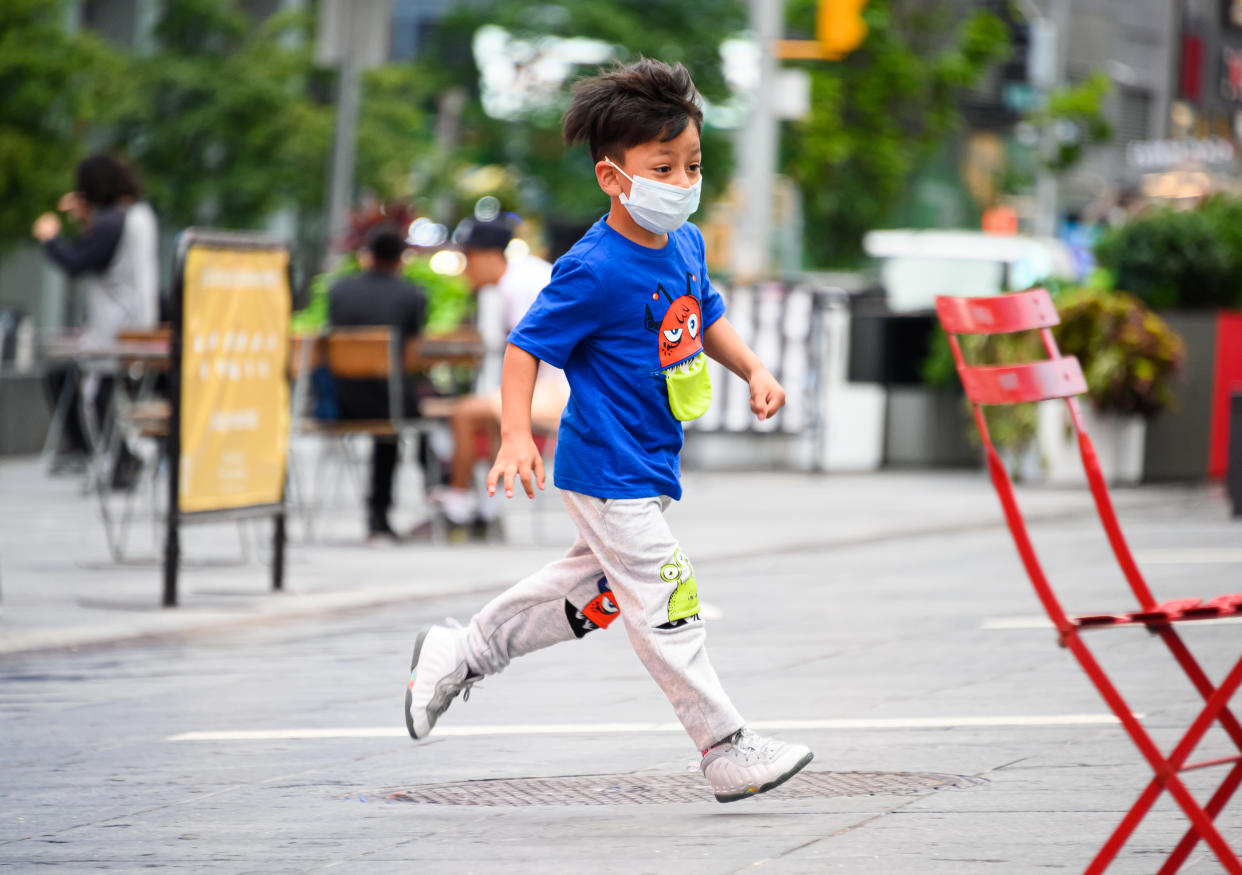Could COVID-19 spread like the flu among children?

After repeated assurances from public health officials that children can’t be a huge factor in the spread of COVID-19, a new study is suggesting otherwise.
The study, which is a pre-proof that has been accepted for publication, in the Journal of Pediatrics concludes that children may be a “potential source of contagion” in the COVID-19 pandemic.
For the study, researchers from Massachusetts General Hospital and Harvard University studied 192 children up to the age of 22. Of those, 49 tested positive for SARS-CoV-2, the virus that causes COVID-19, and 18 more had multisystem inflammatory syndrome in children (MIS-C), a condition with a link to COVID-19 that causes different body parts to become inflamed.
The researchers discovered that the children who were infected had a “significantly higher level” of SARS-CoV-2 in their nose and throat (also known as a “viral load”) than adults who were hospitalized with a severe form of COVID-19. With viruses, a viral load is linked to the level of risk of transmission and to how severe an illness someone might experience.
The study’s researchers warn that this could have a major impact on schools reopening. “If schools were to reopen fully without necessary precautions, it is likely that children will play a larger role in this pandemic,” they wrote.
This isn’t the first study to determine that children can have a high viral load of SARS-CoV-2. An earlier study published in JAMA Pediatrics found that children younger than age 5 hosted up to 100 times as much of SARS-CoV-2 in their upper respiratory tract as adults.
The more recent data could mean that “kids have been silent spreaders, and more attention needs to be paid to this fact,” Dr. Richard Watkins, an infectious disease specialist in Akron, Ohio, and a professor of internal medicine at the Northeast Ohio Medical University, tells Yahoo Life.
This raises an important question: Could COVID-19 spread like the flu among children? It’s possible, Dr. William Schaffner, an infectious disease specialist and professor at the Vanderbilt University School of Medicine, tells Yahoo Life. “We’re now moving into an area where influenza and COVID-19 are beginning to look rather similar,” he says. “But we still need more data.”
With the flu, children have high viral loads of influenza and shed “much more of the virus for longer periods of time” than adults, Schaffner says. “That’s why they have the distribution franchise in our population for influenza,” he jokes. “They bring it home and spread it to their parents, grandparents and neighbors. They’re the real engine of distribution of the influenza virus.”
But that hasn’t been the case with COVID-19 — at least not so far. Many schools across the country closed when the pandemic took root in the U.S., but some daycare centers remained open. Those didn’t spark any major outbreaks, Dr. Amesh Adalja, a senior scholar at the Johns Hopkins Center for Health Security, tells Yahoo Life.
Recent research has shown that the viral load is there in children with COVID-19, Adalja says, “but they don’t seem to be driving the epidemics.” The reason is unclear. “We still don’t have a complete understanding of why children — especially those that are younger — haven’t been linked to any large clusters of infection,” he says. “That’s very different than influenza.”
That doesn’t mean COVID-19 can’t spread like influenza among kids, though. Based on the viral loads, “it turns out that even if children have an asymptomatic or low symptomatic case of COVID-19, they can be sources of transmission,” Dr. Danelle Fisher, a pediatrician and vice chair of pediatrics at Providence Saint John’s Health Center in Santa Monica, Calif., tells Yahoo Life. As a result, she expects to see more cases of COVID-19 in children as schools reopen. “With influenza, we see school-borne cases where a whole class gets exposed. It’s going to end up being the same for COVID-19,” Fisher says.
Fisher is hopeful that wearing masks, social distancing precautions and enhanced cleaning measures will help reduce he spread of COVID-19 in adults and children. “As physicians, we’re desperately nervous,” she says. “If you get both influenza and COVID-19, that’s not going to be cute.”
But overall, Adalja says that it’s important to distinguish between having the capacity to spread a virus like the flu or COVID-19 and actually doing it. “It’s not that young children can’t spread COVID-19, it’s that they’re not spreading it the way they do with influenza at this point,” he says.
Despite all of this, Schaffner points out that “we’re still in early days” of figuring out how easily children transmit COVID-19, and whether they spread it as much as the flu. “How much of a dissemination role do they play? That’s still a question mark,” he says. “We’re still learning.”
For the latest coronavirus news and updates, follow along at https://news.yahoo.com/coronavirus. According to experts, people over 60 and those who are immunocompromised continue to be the most at risk. If you have questions, please reference the CDC’s and WHO’s resource guides.
How to maintain your physical and mental health during the pandemic
Taking care of a loved one with COVID-19? Here’s how to stay healthy
Q&A with Dr. Kavita Patel: How to keep your family safe and maintain your mental health
Read more from Yahoo Life
These 2 neck gaiters may be as effective as cloth masks, new study finds
Teachers go viral for back-to-school rap: ‘No COVID-19, ain’t worried ‘bout a thing’
Want daily lifestyle and wellness news delivered to your inbox? Sign up here for Yahoo Life’s newsletter.


